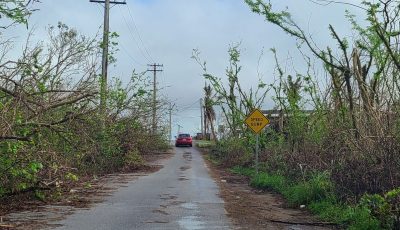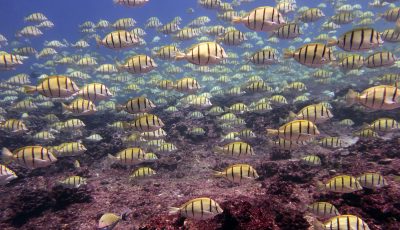NOAA releases Pacific action plan for climate science
Would you like to track climate-related changes or see better environmental forecasts? NOAA Fisheries is proud to share its Regional Action Plan for climate science. This plan identifies effective management strategies in the face of changing climate and ocean conditions, and it provides decision makers with the information they need to make climate-ready decisions.
The goal of the plan is to increase the production, delivery, and use of climate-related information to help reduce impacts to, and increase resilience of, the region’s living marine resources and resource-dependent communities.
NOAA Fisheries’ Pacific Islands Fisheries Science Center is collaborating with others around the region to acquire the necessary scientific data and information for science-based strategies that sustain fisheries, healthy ecosystems, and coastal communities. This science will be used to inform policy and management decisions. “Climate-ready” management will be precautionary, preemptive, and flexible enough to respond rapidly to changing environmental conditions.
The Pacific Islands region spans both the south and north Pacific, from American Samoa to the Northwestern Hawaiian Islands and from the main Hawaiian Islands to the CNMI. The region hosts a wide array of living marine resources, from bigeye tuna (one of the most valuable) to coral reefs (one of the most at-risk from climate change).
In the coming years, the Pacific Islands are expected to experience increased ocean temperatures; rising sea level; increased ocean acidity; lower ocean productivity; and changes in ocean currents, weather patterns, and extreme weather.
Scientists have already observed many of these changes, which are projected to intensify further. Because ecosystems and communities will be impacted by these changes in many ways, decision-makers need information on the timing, nature, and magnitude of climate-related impacts to this region’s valuable marine resources.
Climate-related changes are already impacting the distribution and abundance of marine resources, and these impacts are expected to increase with continued changes in the climate and ocean systems.
Coral reef ecosystems are being stressed by both increasing ocean temperatures and increasing ocean acidification. Loss of coral reef habitat negatively impacts both coral reef ecosystems and the people who depend on them.
Low islands in the region are facing rising sea levels, resulting in the loss of coastal habitats for people, as well as sea turtles, sea birds, and monk seals. Rising sea levels are also causing saltwater intrusion, which threatens freshwater and agriculture.
Climate change is projected to reduce the Hawaii-based longline fishery’s yield by up to 50 percent by the end of the century, resulting in a loss of food and economic resources.
We’ve identified seven key needs to fulfill fisheries management and protected species conservation in the Pacific Islands region. Over the next five years, strategies include:
– Identifying climate-informed reference points
– Creating robust management strategies for a changing climate
– Incorporating adaptive decision processes
– Projecting future conditions
– Understanding how things are changing and why
– Tracking changes and providing early warnings
– Building our science infrastructure
Implementing this plan will begin to provide the climate-related information needed to better understand, prepare for, and respond to climate impacts on marine resources and the people who depend on them.
A critical element of this action plan is partnerships. The challenges are great, the issues are complex, and resources are limited. By working together, we can reduce the impacts of climate change on living marine resources, and increase the resilience of the ecosystem to this change, including living marine resources and the people, businesses, and communities that depend on them.
To see the full action plan or learn more about the strategies, visit: www.pifsc.noaa.gov/do/pacific_islands_regional_action_plan.php, (NOAA)



























